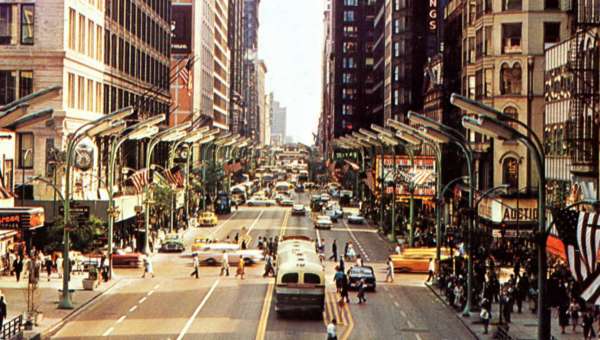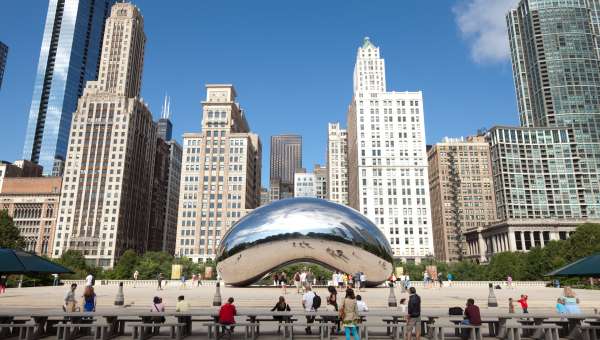Posted 5 years ago in Then and Now
4 MIN READ - When you’re in downtown Chicago, it’s easy to look up and get lost in the stunning architecture, glittering Theatre District lights, and iconic public art. We often overlook the different types of moveable bridges that serve as the gateway to the Chicago Loop. Next time you cross the river along State Street, Michigan Avenue, or Wells Street, remember that you’re walking on a piece of history with engineering that evolved over a century.

Made of timber, one of the earliest bridges was a drawbridge on Dearborn Street. It was built in 1834 and was similar to a bridge found over moats at medial castles. Although vehicles passed over it, its narrow path wasn’t able to accommodate the influx of people traveling through the city. In 1849, a floor swept away a number of floating bridges, accentuating the need to design a different type of bridge.
In 1856, the first steam-powered swing bridges—made from both iron and timber—were introduced as an improvement to the drawbridge. Due to the column built in the middle of the water to rotate the bridge, the passage was so narrow that it wasn’t able to accommodate ships navigating the river. Collisions were a common occurrence. These bridges proved to be impractical in 1863 when the Rush Street bridge collapsed due to the weight of a herd of cattle being driven over it.
As engineers experimented with better solutions, the jackknife bridge was introduced in early 1890. This type slid in and out of itself, but the city didn’t embrace it. In the mid-1890s the vertical lift bridge and the Scherzer rolling lift bridge were developed. With tall towers at either end, the vertical lift bridge controlled the counterweights to lift the center span. Opened at Van Buren Street, the Scherzer rolling lift bridge opens and closes with large counterweights above the road level to help it keep the balance.
In 1901, Chicago found its signature bridge—the trunnion bascule. Also known as the “Chicago Style,” the first of its kind opened over the north branch of the Chicago River at Cortland Street. Derived from French, “trunnion” means “pivot point” and “bascule” means “seesaw.” Operated by a bridgetender, the leaves of the bridge raise high, away from the center of the river with a complex system of counterweights, gears, and electric motors.
Population growth mainly attributed to the popularity and necessity of trunnion bascules in Chicago. In 1830, right around when the first movable bridge was designed, the city’s population was about 4,000. When the swing bridge was introduced in 1856, the population size grew to 90,000. For this large and increasing number of people, bascule bridges were the most practical and remain common in Chicago today.
Video courtesy of Chicago Architecture Center
These movable bridges are still used today, which speaks to their engineering brilliance. At the beginning and end of each boating season, all bridges by the Chicago Loop are lifted, allowing tens of thousands of boats to pass through the Chicago River. They are raised about 30,000 times a year.



